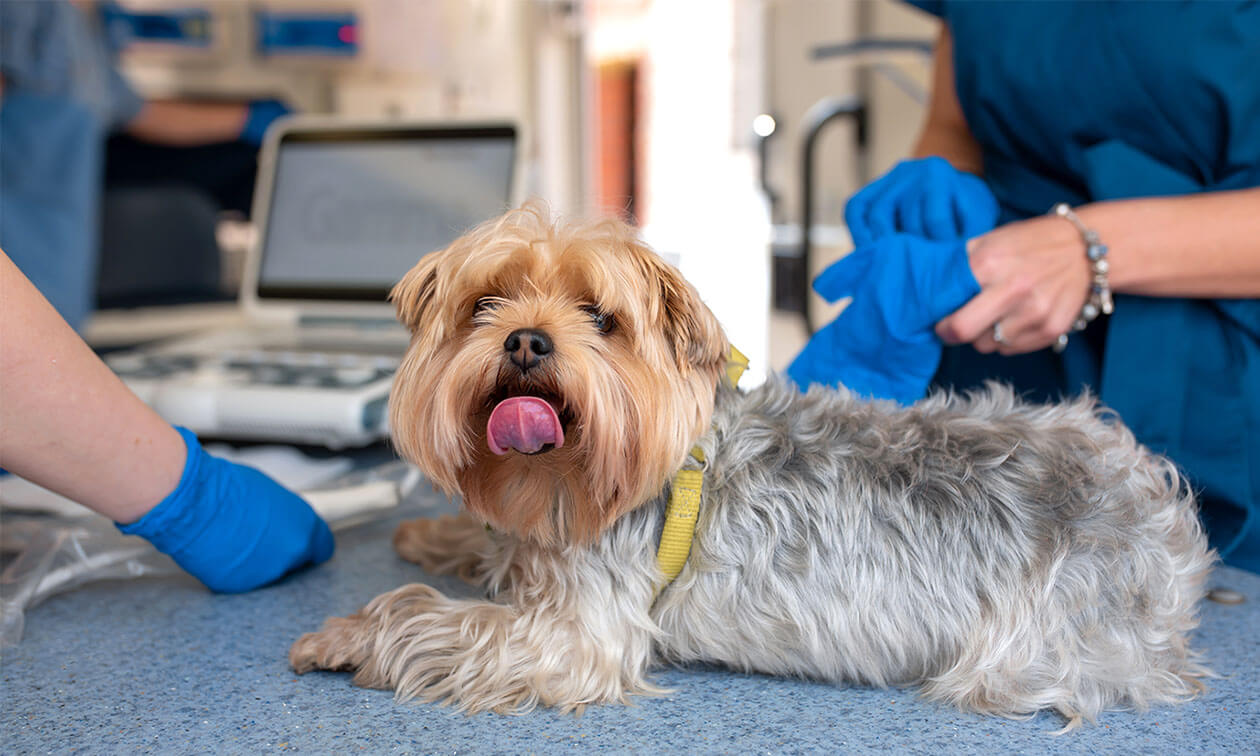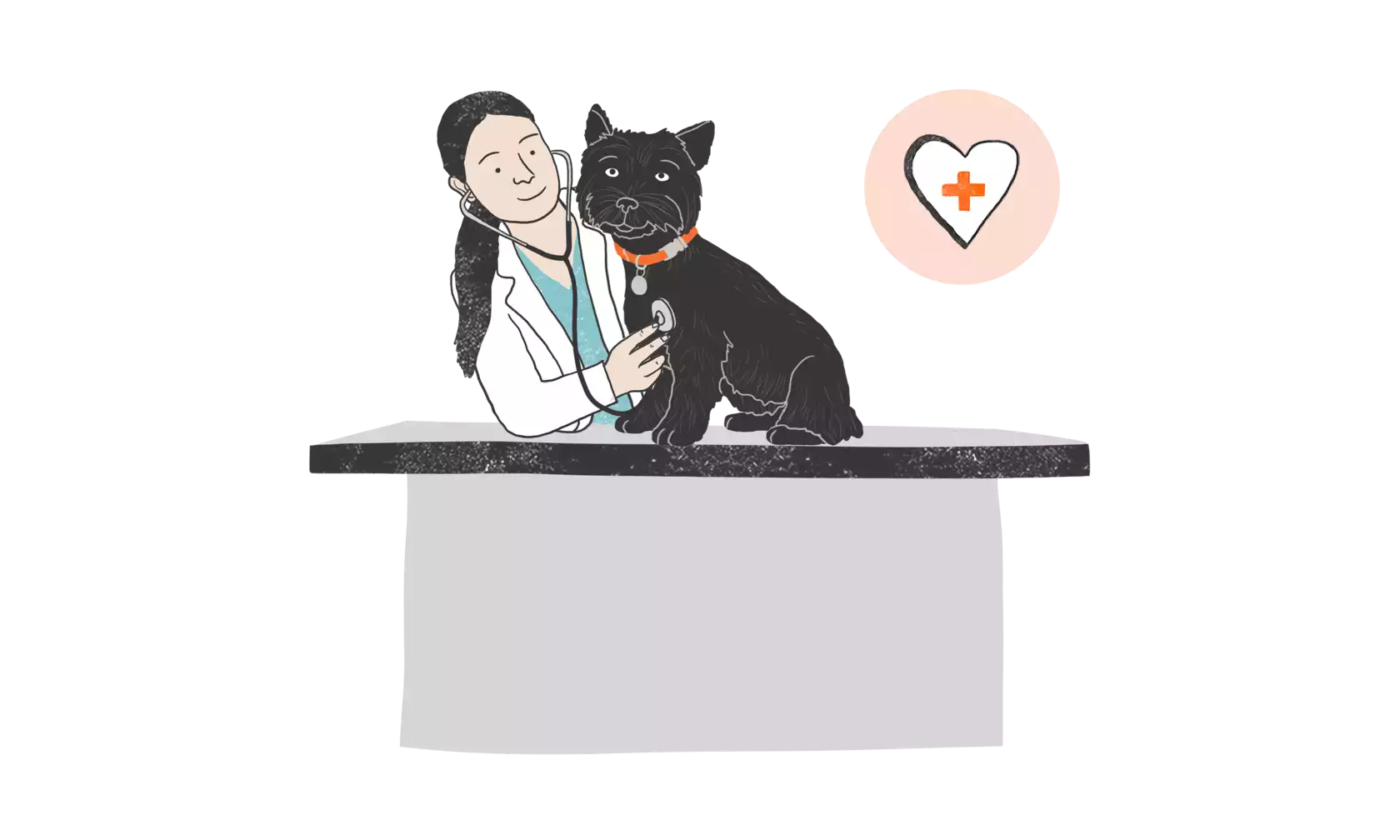Imagine this: your veterinarian has just recommended that your dog have an echocardiogram. You’re understandably worried, but you can ease your worries if you understand what an echocardiogram is, what happens during the process, and how truly beneficial the results can be. Continue reading to gain insight into this valuable diagnostic tool.
Why Do Dogs Need Echocardiograms?
There are several reasons your veterinarian may recommend that your dog have an echocardiogram.
- Your dog was diagnosed with a heart murmur (an abnormal sound heard through the stethoscope during a heartbeat)
- Your dog was diagnosed with heart arrhythmia (irregular heartbeat)
- Your dog's heart murmur has progressed or worsened
- To help determine if your dog's clinical signs (weakness, coughing, difficulty breathing, collapse) are due to heart disease
- Your dog's breed is predisposed to heart disease
- Your veterinarian may have seen an abnormal size or shape of the heart on an x-ray
- Diseases such as heartworm disease
Knowing the status of your dog's heart can even help your veterinarian determine if it is possible to treat other illnesses more aggressively (for example, kidney disease or cancer).
Determining if your dog has heart disease, and what stage they’re in, allows your veterinarian to provide the best treatment plan.
What is an Echocardiogram?
An echocardiogram, also called an echo, is a non-invasive ultrasound requiring specialized equipment, training, and knowledge. It is used by veterinary cardiologists as a diagnostic tool to evaluate the heart. It allows them to determine the heart's size, shape, and function, and explore its chambers, valves, and other surrounding structures. It also evaluates the major blood vessels that leave the heart.
Another aspect that is also used during an echo is a doppler. This non-invasive ultrasound evaluates blood flow through the heart and surrounding vessels, including how blood enters and exits the heart.
Will My Dog Need Pain Medication or Sedation for an Echocardiogram?
Since the test is painless, non-invasive, and generally takes no longer than fifteen minutes, your dog will not require any sedation or anesthesia. However, mild sedation may be needed for dogs who are very fearful or anxious because they must remain completely still during the testing to get clear images and the most accurate evaluation and diagnosis.
Consult your veterinarian before the procedure to determine if your dog will need mild sedation to decrease their fear and anxiety.
Does My Dog Need to Fast Before an Echocardiogram?
If your dog does not require any sedation before their echocardiogram, they can eat and drink normally. Ask your veterinarian about fasting.
Consult your veterinarian to see if it is okay to give any medications or supplements your dog may be taking the morning of their appointment.
Does My Dog Have to be Shaved for an Echocardiogram?
Most dogs do not require shaving, but in some cases, shaving a small patch on both sides of the chest is necessary to help optimize the quality of the images.
What Happens During an Echocardiogram?
Your dog will be laid on their side on a padded table with a cutout that allows a specialized cardiac probe to be lightly placed on the chest wall. A veterinary technician will gently restrain and help keep your dog calm during the procedure.
The hairs will be separated with a small amount of alcohol, and ultrasound gel will be applied to the area to help enhance the contact between the probe and your dog's body.
The veterinary cardiologist will take and evaluate images for any abnormalities (masses in or around the heart or fluid in the heart sac), look at the heart valves and measurements (chamber size, heart wall thickness, large vessel thickness, and blood flow rate through the vessels.) Certain measurements are used to determine how the heart functions, which helps with the diagnosis.
This combination helps the veterinary cardiologist develop a diagnosis and recommend a treatment and follow-up plan. This is often all done on the same day as the echocardiogram.
What Happens After an Echocardiogram?
Once a diagnosis, treatment, and follow-up plan are established, it is important to follow the treatment plan exactly and maintain routine follow-up evaluations with your veterinarian to ensure your dog has the best outcome.
ZPC-02555



